Create a gorgeous border garden with these plants that offer vibrant flowers and textures all season long.
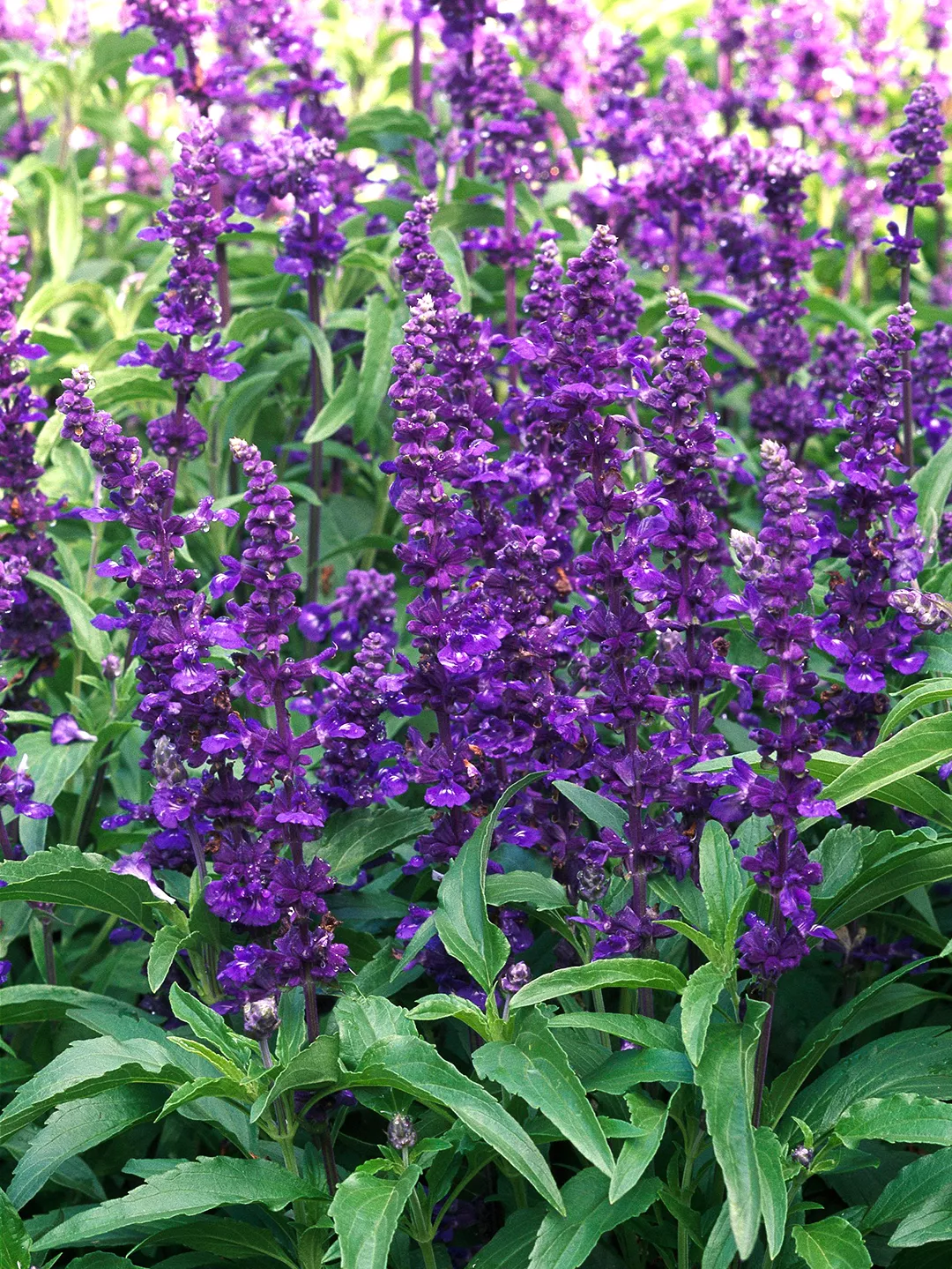
When planting a mixed border garden, there are tons of terrific plant varieties to choose from. The easiest (and often the most economical) choices to plant in your border garden are hardy perennials and fast-growing annuals. The annuals and perennials in the following list make for colorful border plants because they’ll look good together. Plus, they’re low maintenance, have similar growing requirements, and provide plenty of color throughout the growing season. They’re the perfect addition to any garden design.
Angelonia
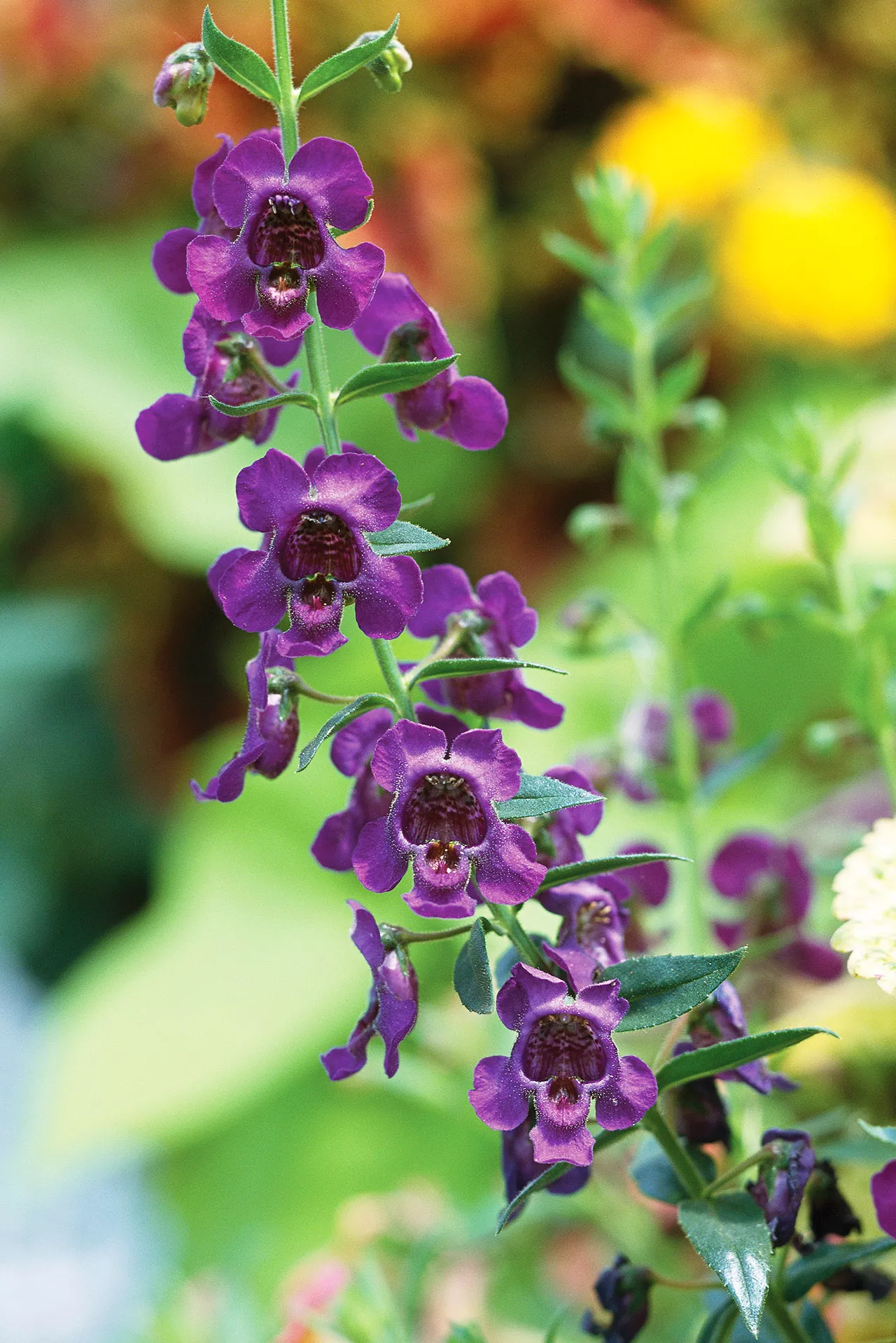
Angelonia is also known as “summer snapdragon,” though it’s not related to true snapdragons. This annual plant is drought tolerant and thrives in the heat, blooming throughout the summer. For a cooling look in a hot garden, try ‘Angelmist Dark Plum’ (shown here) or ‘Archangel Dark Purple,’ two varieties with pretty purple blooms. Grow them in drifts of several plants for the most stunning effect.
Growing Conditions: Full sun and moist, well-drained soil
Size: Up to 24 inches tall and 18 inches wide
Zones: 9-11
Astilbe
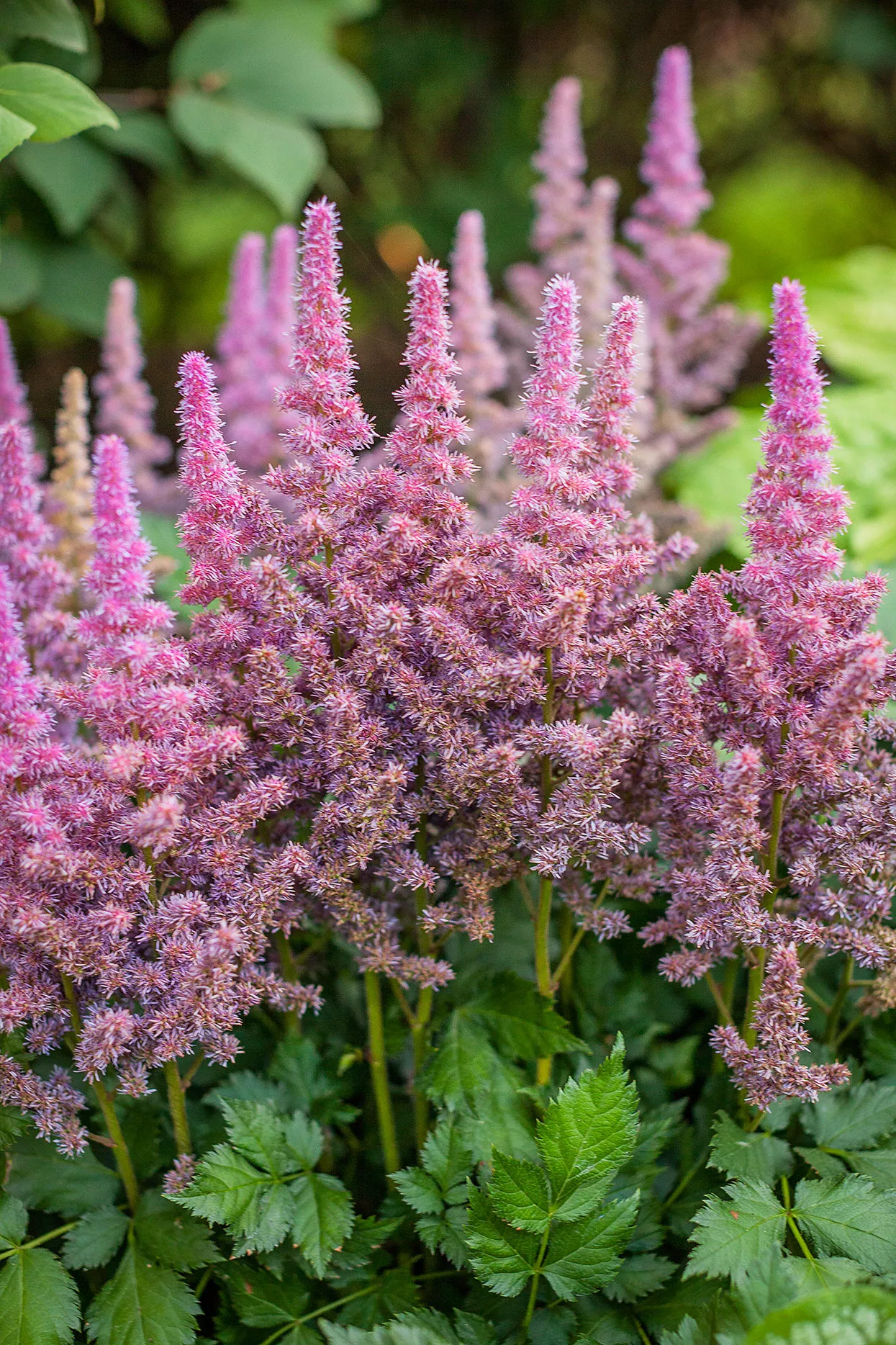
Astilbe (Astilbe chinensis) is a versatile and tough perennial with ferny foliage and showy summer flowers in pink, purple, and white. For example, ‘Visions’ (shown here) has pretty pink flowers. And if you want something for the back of your border garden, try planting ‘Purple Candles’, which reaches about 4 feet tall when its upright bright purple flowers are in bloom.
Growing Conditions: Part shade and moist, well-drained soil
Size: Up to 4 feet tall and wide
Zones: 4-9
Caladium

Caladiums offer stunning foliage that complements the colorful flowers around them. Plant caladiums outdoors in spring after temperatures have warmed and the danger of frost has passed. In cold winter regions, you can treat caladiums as annuals, or transplant them into a pot in the fall and bring them indoors to keep as a houseplant until the next spring.
Growing Conditions: Part to full shade and moist, well-drained soil
Size: Up to 30 inches tall and wide
Zones: 9-12
Creeping Phlox
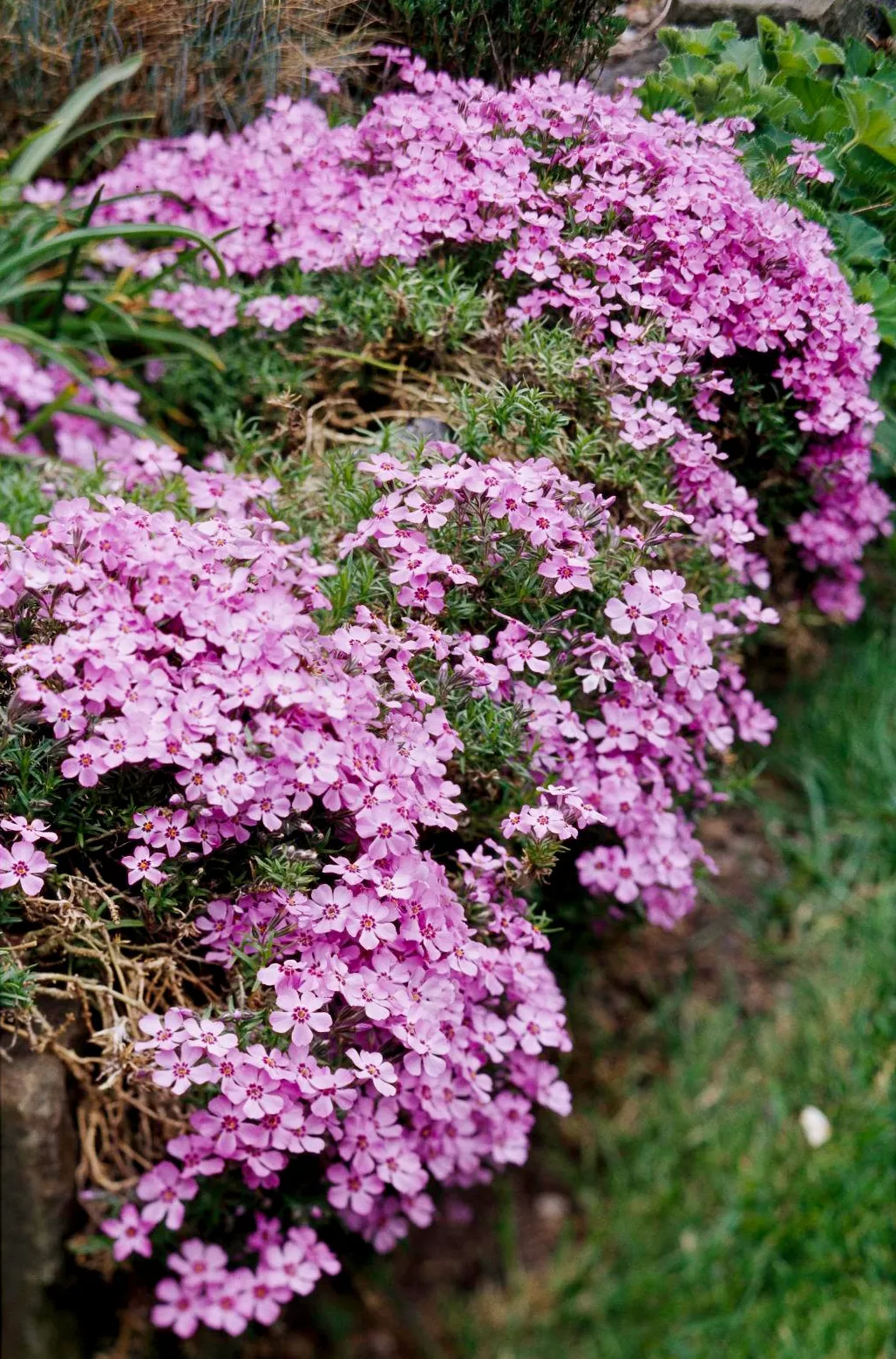
Spilling over rocks and creating mounds of bright purple flowers, creeping phlox (Phlox subulata) is also known as moss phlox. These easy-care perennials are perfect for front-of-border gardens, thanks to their low, creeping growth habit and their burst of flowers in late spring.
Growing Conditions: Full sun and loamy, well-drained soil
Size: Up to 6 inches tall and 3 feet wide
Zones: 3-9
Dahlia

Dahlias come in myriad sizes, shapes, and colors, and many varieties make for beautiful, colorful border plants. For example, ‘Hypnotica Orange’ is an eye-catching plant for the front of your border garden. Regular dead-heading and plenty of moisture will keep them looking their best throughout the growing season.
Growing Conditions: Full sun and moist, well-drained soil
Size: Up to 6 feet tall and 10 inches wide
Zones: 9-11
Lamb’s Ear

Commonly called lamb’s ear (Stachys byzantina) because of the shape and texture of the leaves, this slowly spreading perennial groundcover adds a touch of silver to border gardens. Don’t overwater once plants are established. Flower stems can be left to go to seed to help fill in bare spots over time.
Growing Conditions: Full sun to partial shade and average, well-drained soil
Size: Up to 8 inches tall and wide
Zones: 4-8
Verbena
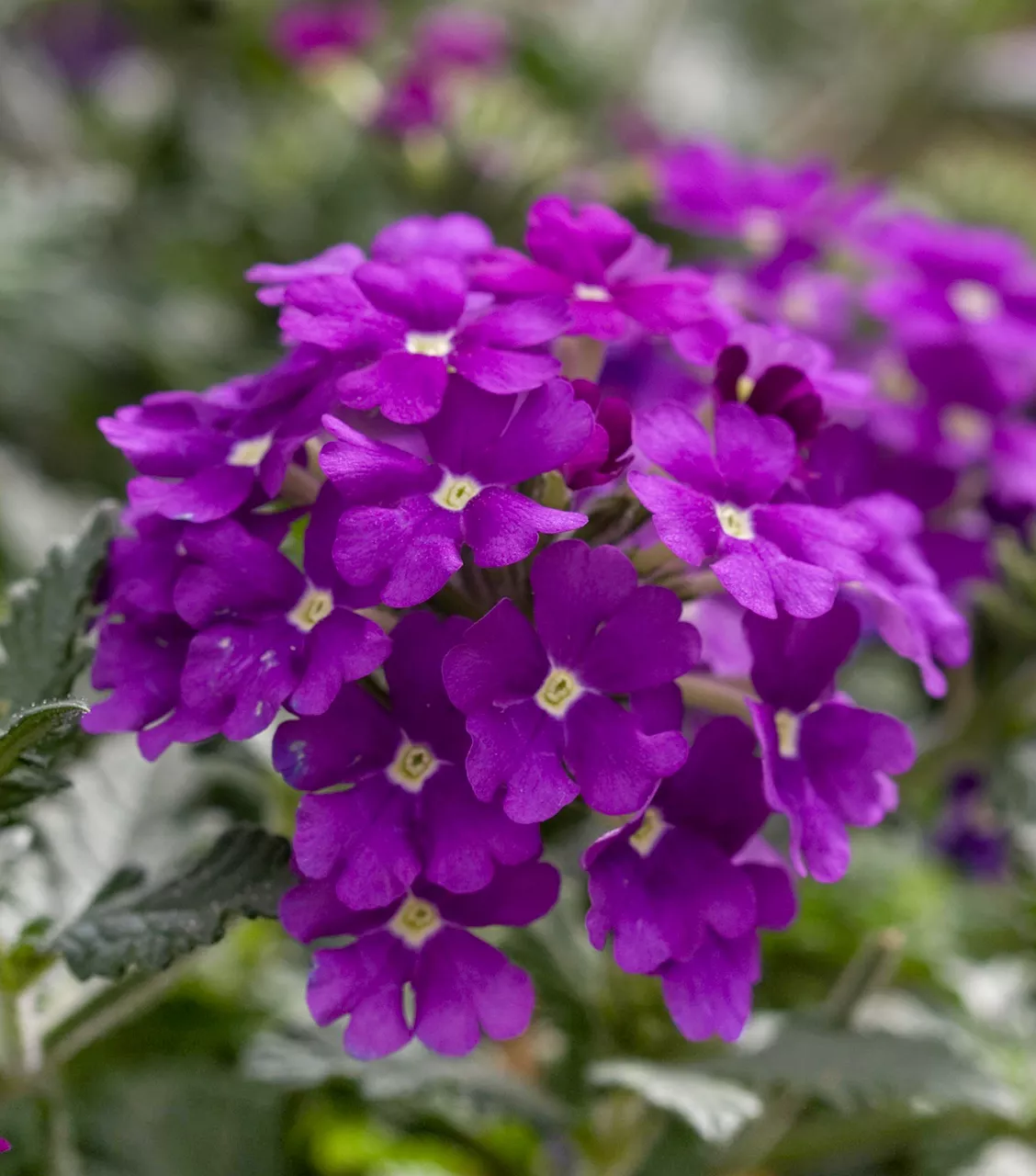
Verbena is a summertime favorite for its brightly colored blooms in shades of purple, red, pink, and white. This plant has an outstanding ability to bloom throughout the season, attracting a wide variety of pollinators along the way. Its low-growing stems make it a good choice for edging your border garden.
Growing Conditions: Full sun with well-drained soil
Size: 6-12 inches tall and 20 inches wide
Zones: 8-11
Purple Coneflower
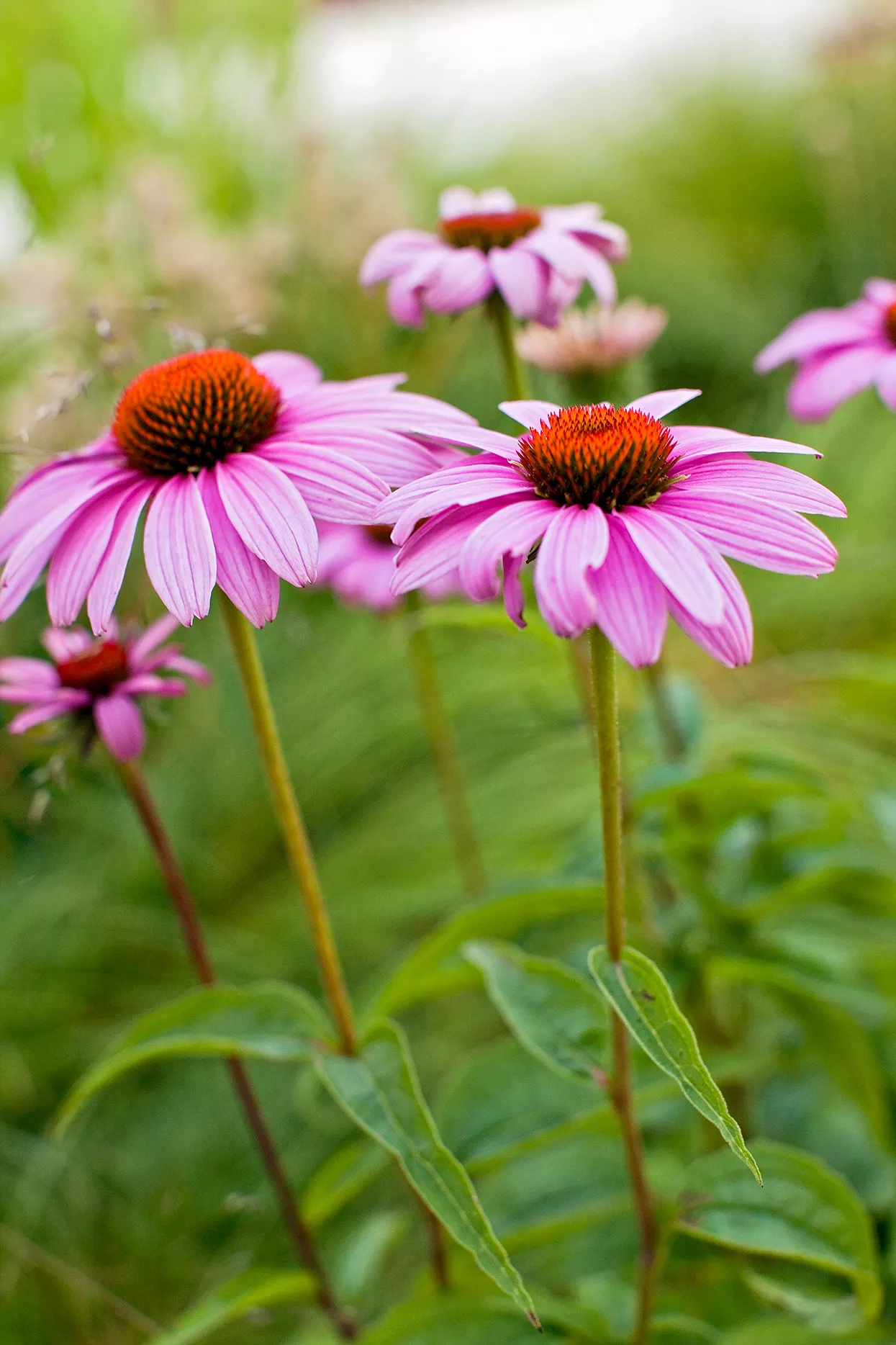
Native purple coneflowers (Echinacea purpurea) can make beautiful border garden plants and are pollinator magnets. Some newer varieties, such as ‘Powwow Wild Berry’, offer an extended bloom time, producing successions of stocky, purple flowers throughout the summer. Deadhead spent blooms early in the season to push blooms longer into the season, and then leave on the plants later in the season to provide food for birds in fall.
Growing Conditions: Full sun and average soil
Size: Up to 4 feet tall
Zones: 3-9
Panicle Hydrangea
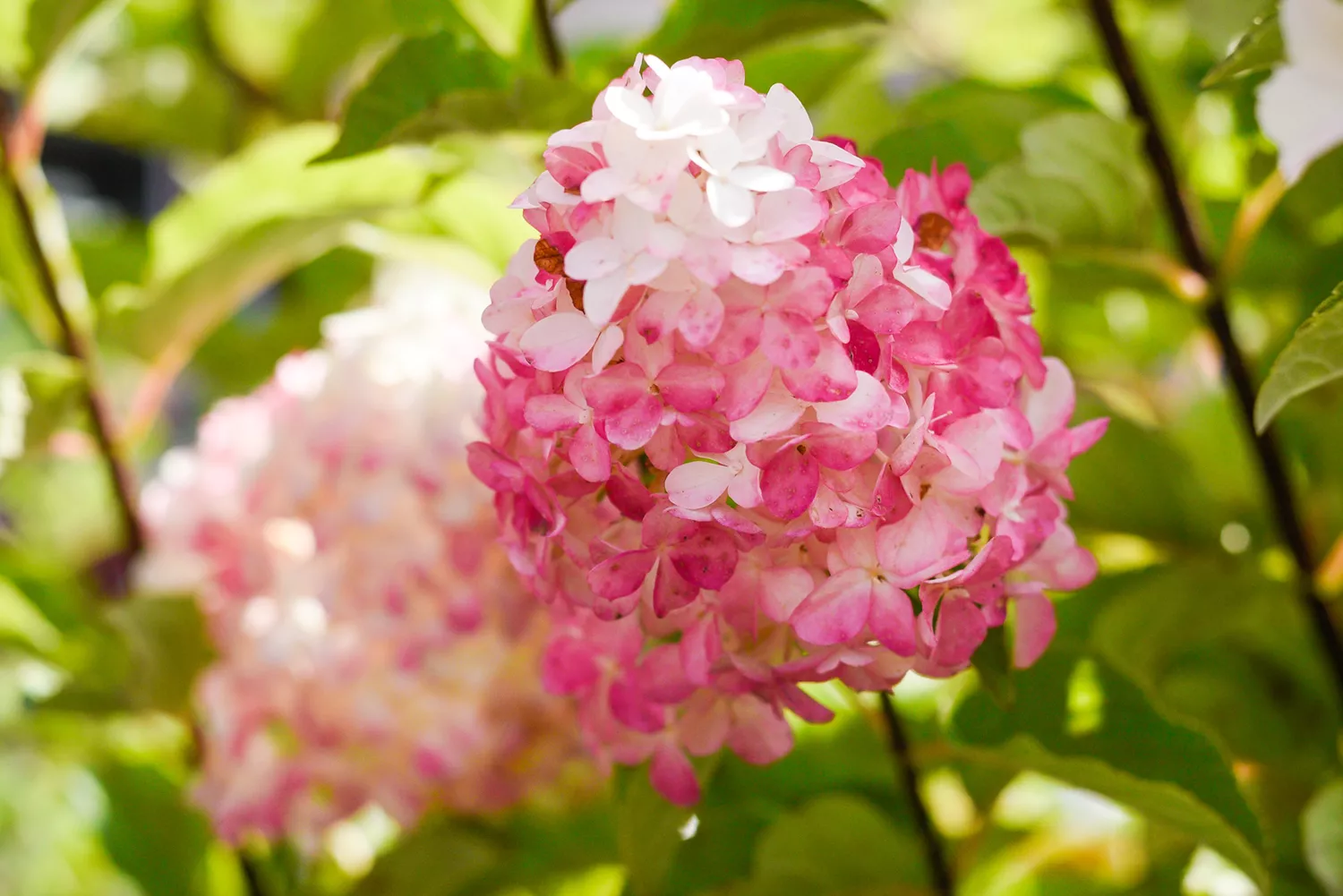
Panicle hydrangeas (Hydrangea paniculata) are easy-care shrubs that help anchor the back of a border garden. A popular variety to look for is the ‘Vanilla Strawberry’ hydrangea (shown here) which has white flowers that turn pink. For smaller spaces, ‘Strawberry Shake’ is another option. Its off-white flowers slowly take on a pink hue for a pretty two-tone effect. Provide ample water during the hottest parts of the summer.
Growing Conditions: Full sun to part shade and moist, well-drained soil
Size: 5-7 feet tall
Zones: 4-9
Salvia
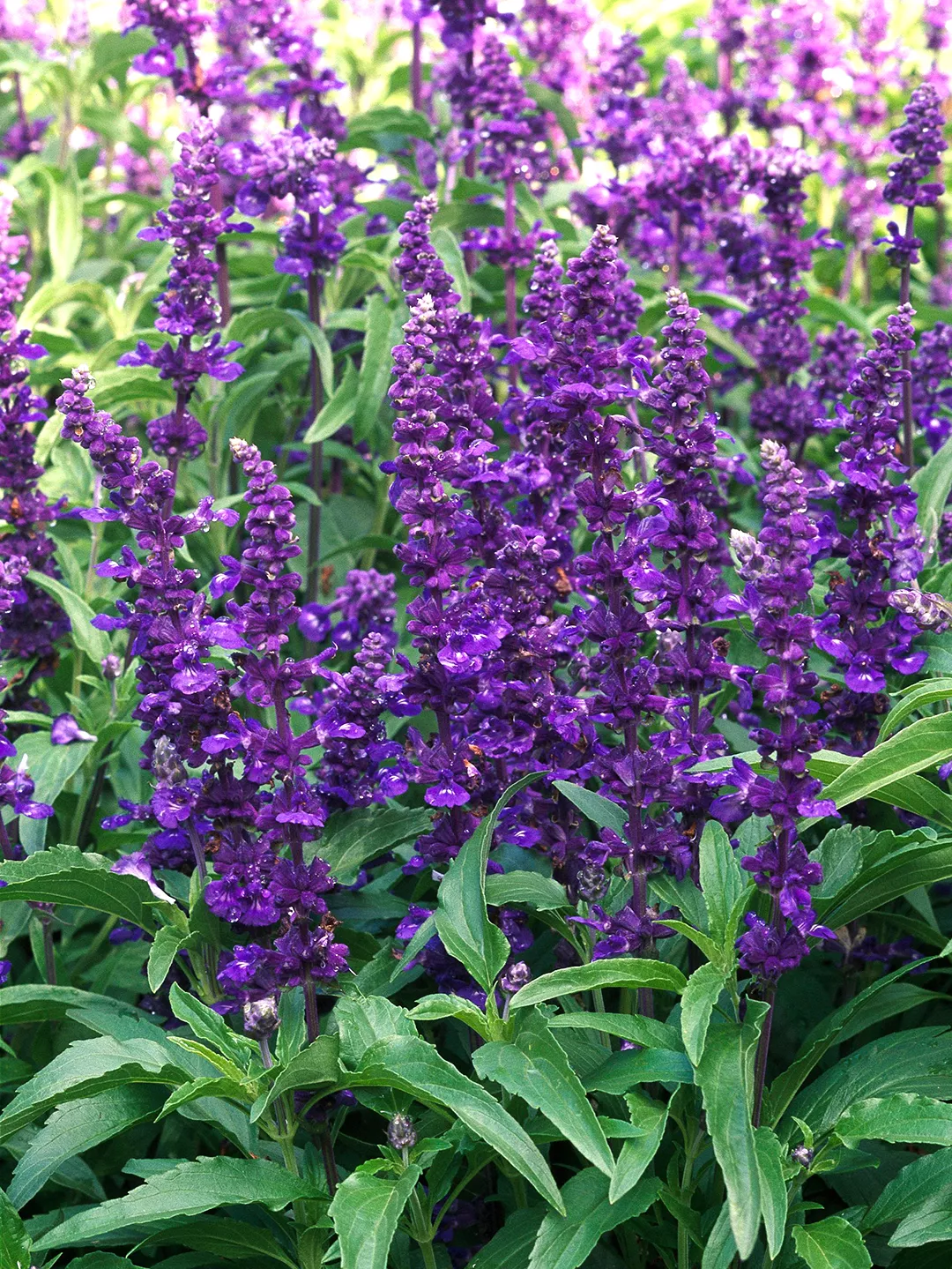
In general, both annual and perennial salvias are drought-tolerant, nearly immune to rabbits and deer, and are very attractive to all kinds of pollinators, so are well worth including in a border garden. Though they come in several warm hues, many salvias are perfect for adding a splash of cool color. For example, classic ‘Victoria Blue’ (shown here) and ‘Sallyfun Blue’ mealycup sage (Salvia farinacea) are easy-care options with purple and blue flowers respectively.
Growing Conditions: Full sun and average soil
Size: Up to 3 feet tall and wide
Zones: 5-9
Black-Eyed Susan
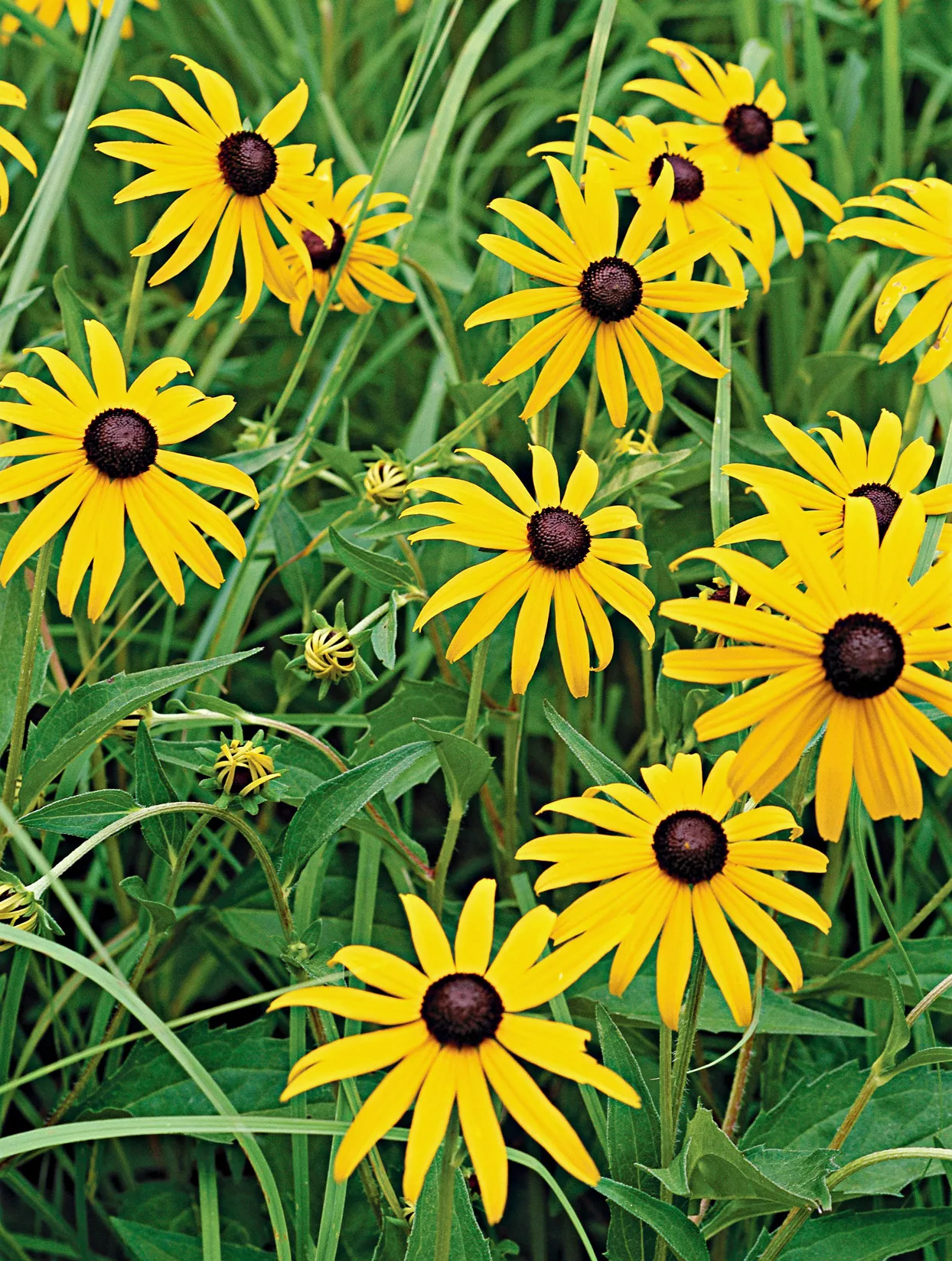
When it comes to black-eyed Susan (Rudbeckia fulgida), one of the most popular varieties is ‘Goldsturm’, thanks to its profusion of yellow flowers, tidy habit, and drought tolerance. Other varieties offer different colors and sizes. Flowers can be deadheaded or left on the plants to provide food for wild birds.
Growing Conditions: Full sun and moist to moderately dry, well-drained soil
Size: Up to 36 inches tall and wide
Zones: 3-9
Stonecrop
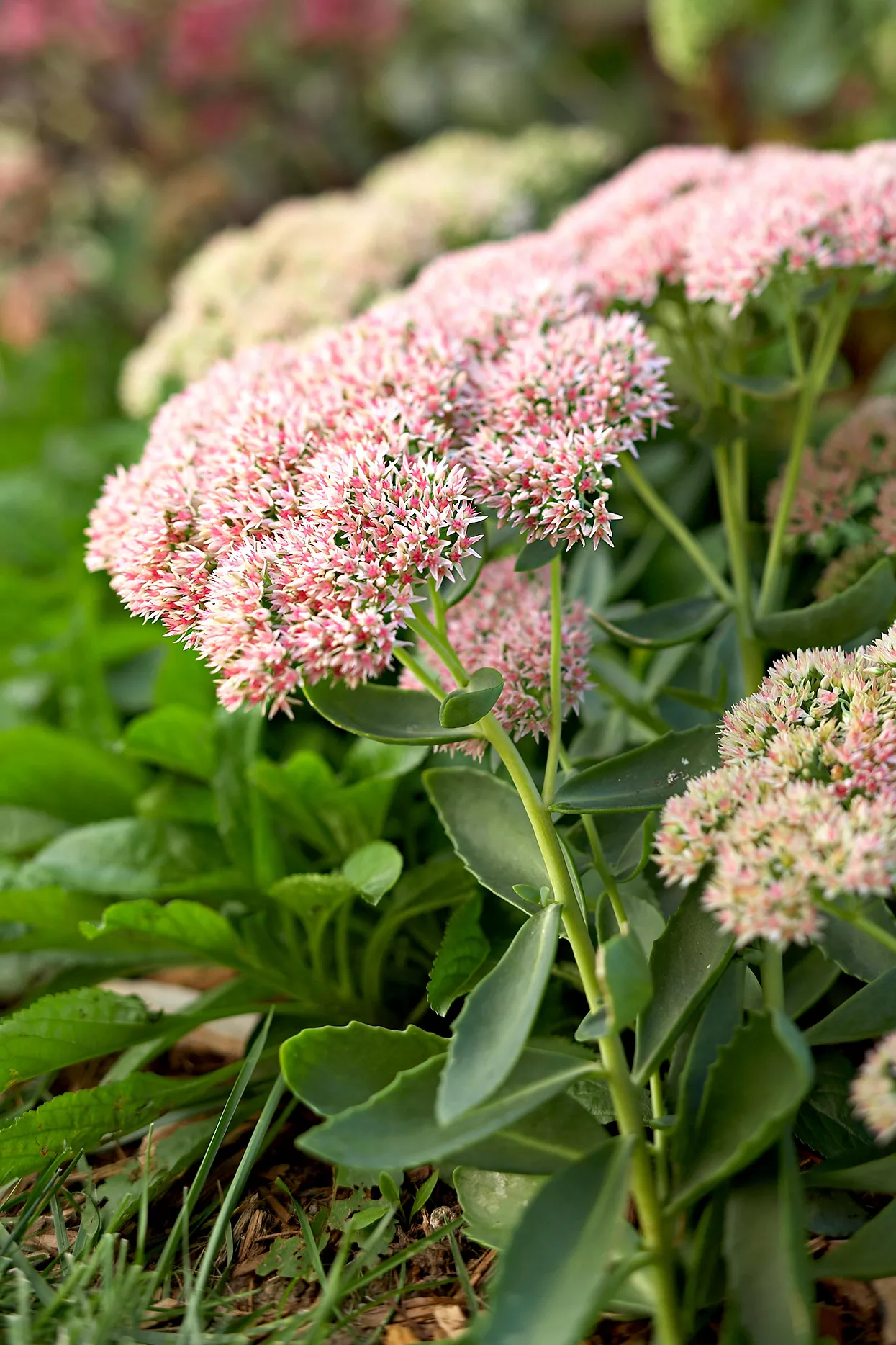
Stonecrop (aka sedum) is another classic garden plant, especially ‘Autumn Joy’. This variety is an excellent choice for adding late-season color to your border garden. Needing only minimal care, ‘Autumn Joy’ will produce flowers in late summer that change from a bright pink to subdued bronze in fall. Leave flower heads intact for winter interest.
Growing Conditions: Full sun to part shade in average, well-drained soil
Size: Up to 2 feet tall and wide
Zones: 3-10





